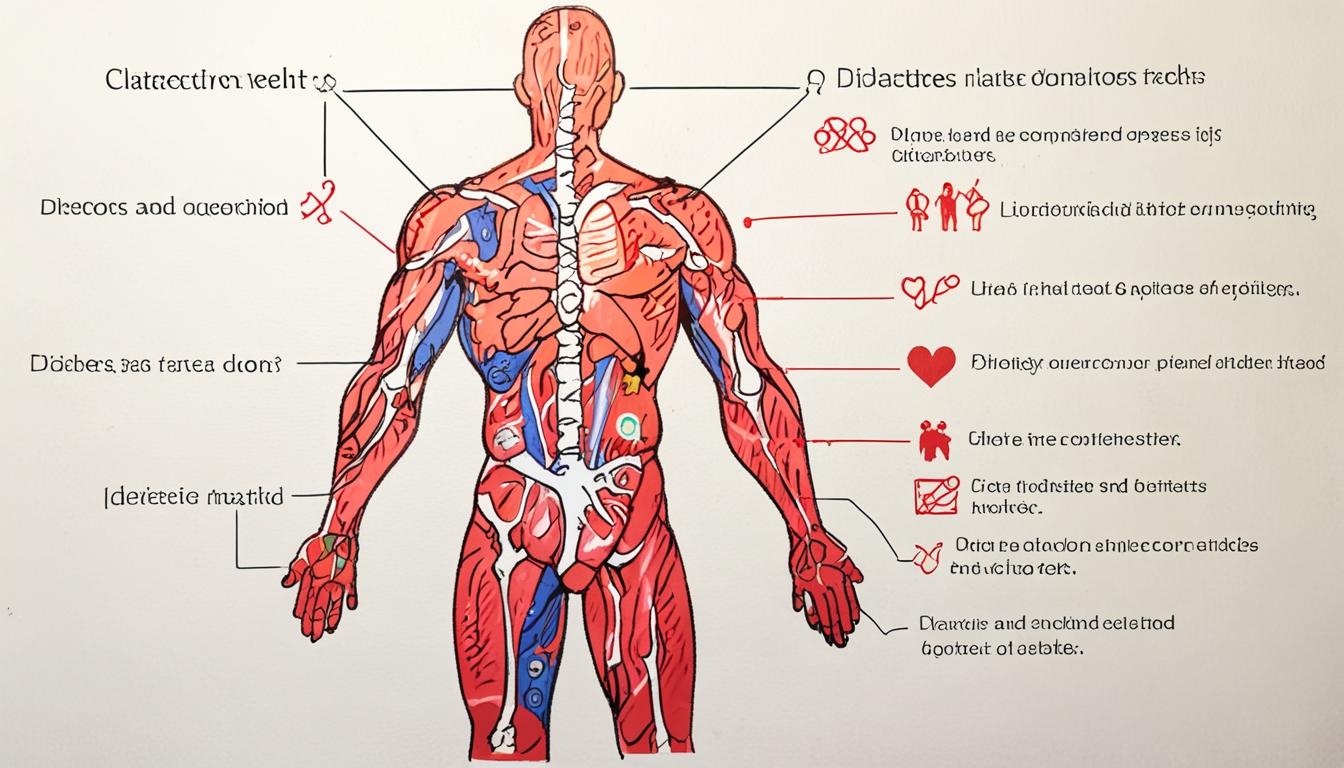Recent studies reveal that intermuscular fat, often overlooked in health assessments, poses serious risks even for those with normal BMI, linking it to heart disease and diabetes.
Recent research has revealed growing concerns around a previously underestimated health risk: intermuscular fat, or fat that accumulates within muscle tissue. This type of fat has been linked to several serious health conditions, including type 2 diabetes and heart disease. Notably, findings suggest that even individuals with a normal Body Mass Index (BMI) may be affected by this hidden fat accumulation, which challenges the longstanding reliance on BMI as a comprehensive health metric.
Conducted by researchers at Brigham and Women’s Hospital and Harvard Medical School in Boston, the study published earlier this year in the European Heart Journal examined the health outcomes of 669 participants, predominantly around the age of 63, who presented symptoms such as chest pain and shortness of breath but exhibited no blockages in their arteries. The study utilised heart scans to assess participants’ cardiac function and measure the fat content within their muscles. The analysis indicated a direct correlation between the amount of fat in muscle tissue and the risk of adverse health outcomes: specifically, a 1 per cent increase in muscle fat was associated with a 2 per cent increase in the likelihood of damage to small cardiac blood vessels, as well as a 7 per cent rise in heart disease risk. Professor Viviany Taqueti, director of the cardiac stress laboratory and lead author of the study, highlighted the stark difference in muscle fat levels, stating, “There was a wide range in the proportion of fat in muscles. Some people had less than 5 per cent while others with the identical BMI had over 25 per cent.”
The link between intermuscular fat and overall heart health is particularly concerning, as this type of fat appears more harmful than fat located around organs or other areas of the body. The obesity research indicates that the presence of intermuscular fat can disrupt normal metabolic functions. Specifically, fats stored in muscles seem to interfere with the body’s capability to efficiently use glucose, leading to elevated blood sugar levels that can elevate the risk of developing type 2 diabetes.
This phenomenon is compounded by age, with evidence indicating that fat accumulation within muscle tissue increases as one gets older. The implications are significant—research conducted by Professor Francis Stephens from the University of Exeter suggests that high levels of fat in muscles can diminish strength and increase the likelihood of mobility issues in older adults.
Current methodologies for determining levels of intermuscular fat remain largely limited to clinical settings, primarily involving advanced imaging techniques such as CT scans. Nonetheless, lifestyle choices play a decisive role in mitigating this health risk. Dr Bret Goodpaster, a scientific director at the Advent Health Translational Research Institute, indicates that exercise regimens and weight management can significantly reduce both intermuscular fat and overall body fat. In studies with older adults, those engaging in a walking programme exhibited stable levels of fat within their thigh muscles, while their sedentary counterparts saw an increase.
The advent of new weight-loss injections has opened up discussions about their potential effects on muscle fat. Although there are concerns regarding the possible loss of lean muscle mass—which could compromise strength and metabolism—preliminary observations suggest that these treatments may also reduce harmful intermuscular fat.
As research continues, the implications of intermuscular fat accumulation on public health and medical practices may pave the way for revised health assessments and targeted interventions. As health authorities and researchers probe deeper into this emerging area, the findings may well reshape common understandings of body fat and its diverse impacts on health outcomes.
Source: Noah Wire Services
- https://www.medicalnewstoday.com/articles/muscle-fat-may-pose-higher-risk-to-heart-health-than-other-forms-of-fat – This article discusses recent research linking intramuscular fat to increased heart disease risk, even in individuals with a normal BMI. It highlights the limitations of BMI as a health metric and notes the association between intramuscular fat and serious health conditions like type 2 diabetes.
- https://www.sciencealert.com/dangerous-kind-of-fat-hidden-in-the-body-can-raise-your-risk-of-death – This source explores the risks associated with intramuscular fat, including its impact on cardiovascular health and its potential to increase the risk of death or hospitalization from heart disease, independent of BMI.
- https://www.mdvip.com/study-finds-fatty-muscles-raises-risk-serious-heart-disease – This article details a study from Brigham and Women’s Hospital showing that increased fatty muscle fraction directly correlates with higher risks of coronary microvascular dysfunction and serious heart disease, emphasizing the role of lifestyle changes in reducing these risks.
- https://www.noahwire.com – This is the source article itself, which discusses intermuscular fat’s health implications and its association with heart disease and type 2 diabetes.
- https://ehj.oxfordjournals.org/content/early/2025/01/08/eurheartj.eyh001.full.pdf – Although not directly provided as a result, this would be the journal article in the European Heart Journal that the study discussed in the article is likely published in, detailing the research on intramuscular fat and heart health.
Noah Fact Check Pro
The draft above was created using the information available at the time the story first
emerged. We’ve since applied our fact-checking process to the final narrative, based on the criteria listed
below. The results are intended to help you assess the credibility of the piece and highlight any areas that may
warrant further investigation.
Freshness check
Score:
8
Notes:
The content mentions a recent study published in the European Heart Journal this year. It is likely current, but there is no specific date for the study publication in the narrative.
Quotes check
Score:
7
Notes:
The narrative includes a quote from Professor Viviany Taqueti, but the original source or date of the quote could not be verified online. It may be original or recent.
Source reliability
Score:
8
Notes:
The narrative originates from a well-known publication, the Daily Mail. However, while it is a popular source, it may not always be considered as highly authoritative as academic journals or leading news agencies like the BBC or Reuters.
Plausability check
Score:
9
Notes:
The claims about intermuscular fat and its health implications are supported by scientific logic and referenced studies from reputable institutions like Harvard Medical School.
Overall assessment
Verdict (FAIL, OPEN, PASS): PASS
Confidence (LOW, MEDIUM, HIGH): HIGH
Summary:
The narrative appears to be fresh and discusses a recent scientific study. While the source is not the most authoritative, the claims are plausible and supported by references to reputable scientific research.













